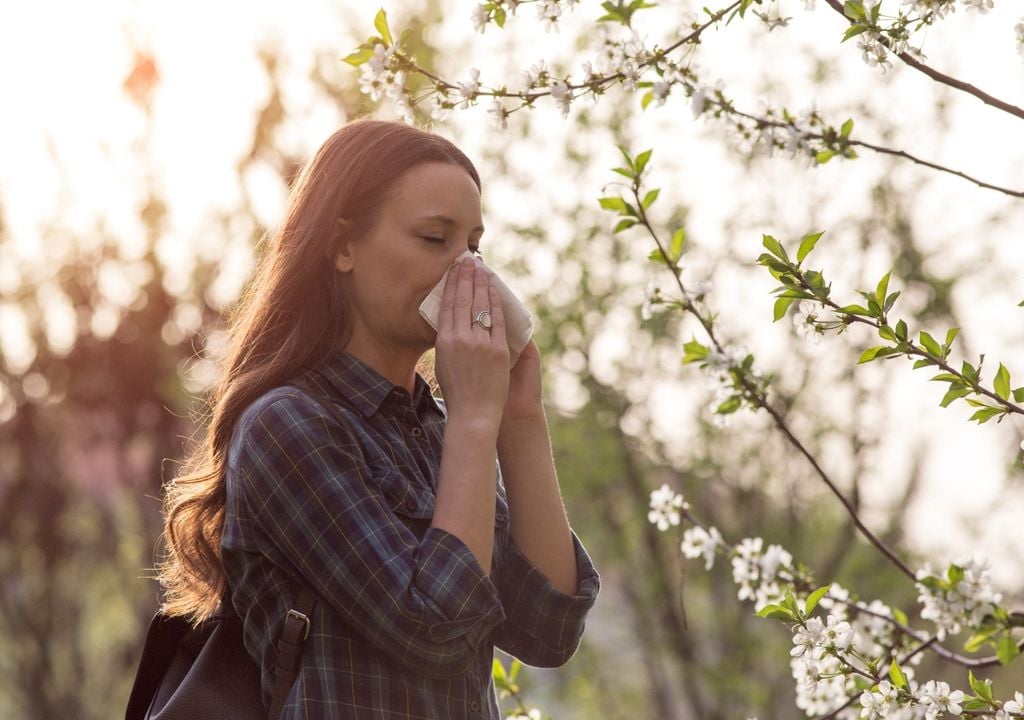Are sneezing the new normal? Allergies are on the rise worldwide due to climate change.
Dust storms, wildfires, and other factors associated with climate change increase allergies both directly and indirectly through increased particulate matter, pollen, and decreased biodiversity.

Have you noticed that in recent years it seems like everyone around you is sneezing, complaining of itchy eyes, or having trouble breathing? It's not just a feeling, and the data is overwhelming: allergies, especially allergic rhinitis and asthma, are on the rise. And while it may seem like a trivial matter, behind this phenomenon lies a complex network of factors, including pollution and, above all, climate change.
The air around us isn't as simple as it seems. In addition to life-supporting gases like oxygen, it also contains microscopic particles that can affect our health. These include dust, car emissions, and, of course, pollen. Pollen, although invisible to the naked eye, is one of the main causes of seasonal allergies.
El cambio climático intensifica las alergias respiratorias
— Transición Ecológica y Reto Demográfico (@mitecogob) April 7, 2024
modificando la polinización de árboles y plantas
En España la alergia al polen afecta al 15% de la población
️ En 2030 afectará al 25%
La emergencia climática es una emergencia sanitaria#DíaMundialdelaSalud pic.twitter.com/0zDOwI4AGd
Pollen grains are the male reproductive cells of plants. Their size and composition vary depending on the species, which explains why some plants make us sneeze and others don't . But here comes the key question: what does climate change have to do with all this?
Climate change: it's not just heat, it's also pollen
Climate change is an undeniable reality. In 2024, for the first time, global temperatures will have exceeded 1.5°C compared to pre-industrial levels, and the last decade has been the warmest on record. This increase in temperature not only makes us sweat more, but it is also altering the natural cycles of plants , what scientists call phenology.
Phenology studies cyclical biological events, such as flowering, that are closely linked to climate. When the climate changes, plants respond. And one of those responses is pollen production. But it's not just about having more pollen; it's about pollen behaving differently.

For example, between 1995 and 2011, rising temperatures in the U.S. lengthened the pollen season by 11 to 27 days. These warmer temperatures generate more pollen in the air, more potent airborne allergens, and more allergy symptoms.
What 30 years of data tell us
In Spain, monitoring networks have been in place for more than three decades to measure pollen concentrations in the air. These data allow us to see how the situation has changed over time. And what the data show is fascinating: not only does the amount of pollen vary, but also the periods in which it is emitted.
El cambio climático tiene un gran impacto en las personas alérgicas. Las estaciones polínicas más largas de la actualidad provocan una intensificación de los síntomas de la alergia.@SEAIC_Alergia@SEICAP@AEPNAA1#ValorInmunoterapia pic.twitter.com/JXuoSKPPmR
— Foro Español de Pacientes (@fep_pacientes) June 27, 2023
For example, some herbaceous plants, such as grasses and nettles, are showing more erratic behavior due to climate extremes such as droughts and heat waves. In the case of grasses, although the total amount of pollen did not increase, it is emitted in a shorter period of time, which intensifies its effects.
On the other hand, woody plants, such as trees, are more resistant to specific climate changes, but not immune. An emblematic case is that of the London plane (Platanus sp.), whose pollen concentrations are increasing in southern Spain. This appears to be related to rising temperatures and the greater number of hours of sunlight in the months prior to pollen emission.
The future of allergies: what lies ahead?
All this evidence points to one clear conclusion: climate change is not only transforming the planet, but also our health. Plants are responding to new weather patterns, and this has a direct impact on those of us who suffer from allergies.
Although the future is uncertain, data suggests that allergies could become more intense and frequent. And while we can't stop climate change overnight, understanding how it affects us is the first step toward adapting and finding solutions.
News reference:
Ioana Agache, Cezmi Akdis, Mubeccel Akdis, et.al. Climate change and allergic diseases: A scoping review, The Journal of Climate Change and Health
https://aafa.org/wp-content/uploads/2022/08/extreme-allergies-global-warming-report-2010.pdf








